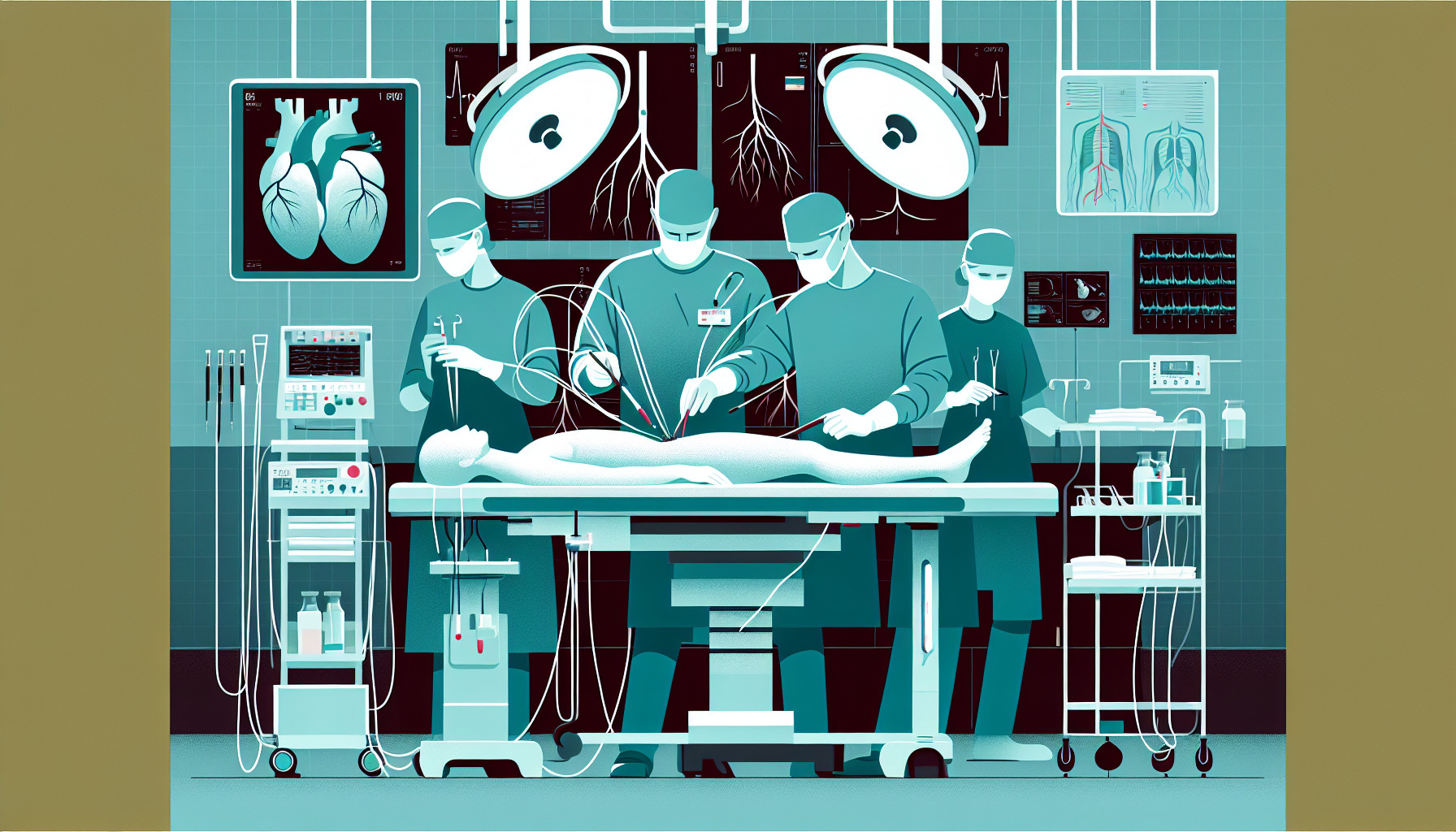Vascular Surgery
Articles and resources for Vascular Surgery.
Vascular surgery is a medical specialty focused on diagnosing and treating conditions related to the vascular system, which includes arteries, veins, and lymphatic vessels. Common reasons individuals might encounter vascular surgery include issues such as peripheral artery disease, aneurysms, varicose veins, and blood clots. Patients may experience symptoms like pain, swelling, or changes in skin color, prompting them to seek evaluation and treatment. Vascular surgeons play a crucial role in managing these conditions, often collaborating with other healthcare providers to ensure comprehensive care.
Vascular surgeons typically work in hospitals, outpatient clinics, and specialized vascular centers. They often collaborate with a range of professionals, including primary care physicians, cardiologists, radiologists, and nurses. This multidisciplinary approach helps coordinate care, ensuring that all aspects of a patient’s condition are addressed. Communication among team members is essential for developing a tailored treatment plan that meets the individual’s needs, whether that involves surgery, medication, or lifestyle changes.
Common evaluations in vascular surgery include imaging tests such as ultrasound, CT scans, and MRIs, which help visualize the blood vessels and detect abnormalities. Procedures may range from minimally invasive techniques, like angioplasty and stenting, to more complex surgeries, such as bypass grafting or endarterectomy. These interventions aim to restore proper blood flow and alleviate symptoms associated with vascular conditions. The choice of evaluation or procedure typically depends on the specific diagnosis and the patient’s overall health.
Patients may be referred to a vascular surgeon when non-invasive treatments are insufficient, or when a condition poses a significant risk to health. During the initial consultation, the surgeon will review the patient’s medical history, discuss symptoms, and perform necessary evaluations. Patients can typically expect a thorough explanation of their condition and the recommended treatment options. Understanding the benefits and risks associated with procedures is an integral part of the decision-making process, allowing patients to make informed choices about their care.

Aortic Aneurysm Repair
Articles and resources for Aortic Aneurysm Repair in Vascular Surgery.
Av Fistula Creation
Articles and resources for Av Fistula Creation in Vascular Surgery.
Carotid Endarterectomy
Articles and resources for Carotid Endarterectomy in Vascular Surgery.
Femoral-Popliteal Bypass
Articles and resources for Femoral-Popliteal Bypass in Vascular Surgery.
Peripheral Artery Bypass
Articles and resources for Peripheral Artery Bypass in Vascular Surgery.
Superficial Thrombophlebitis Surgery
Articles and resources for Superficial Thrombophlebitis Surgery in Vascular Surgery.
Vascular Bypass
Articles and resources for Vascular Bypass in Vascular Surgery.
Vascular Surgery
Articles and resources for Vascular Surgery in Vascular Surgery.
Aortic Aneurysm Repair
Articles and resources for Aortic Aneurysm Repair in Vascular Surgery.
Av Fistula Creation
Articles and resources for Av Fistula Creation in Vascular Surgery.
Carotid Endarterectomy
Articles and resources for Carotid Endarterectomy in Vascular Surgery.
Femoral-Popliteal Bypass
Articles and resources for Femoral-Popliteal Bypass in Vascular Surgery.
Peripheral Artery Bypass
Articles and resources for Peripheral Artery Bypass in Vascular Surgery.
Superficial Thrombophlebitis Surgery
Articles and resources for Superficial Thrombophlebitis Surgery in Vascular Surgery.
Vascular Bypass
Articles and resources for Vascular Bypass in Vascular Surgery.
Vascular Surgery
Articles and resources for Vascular Surgery in Vascular Surgery.